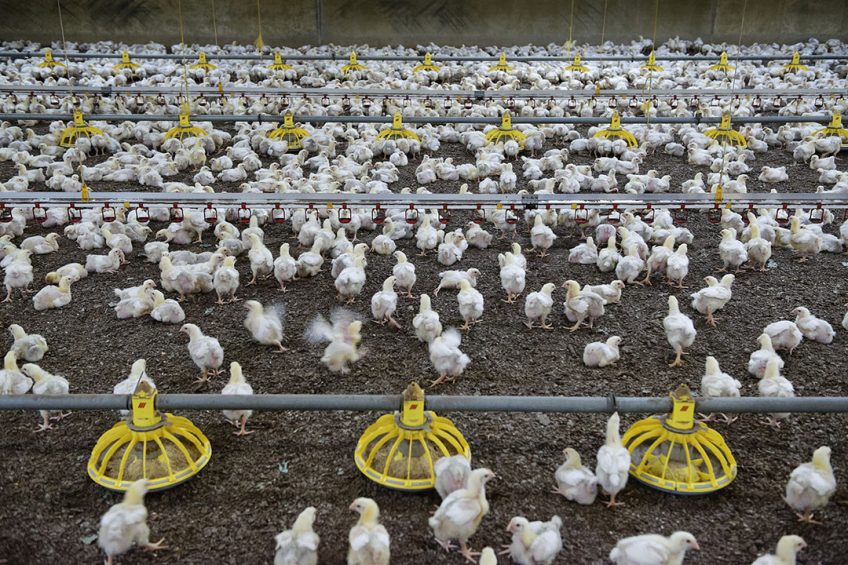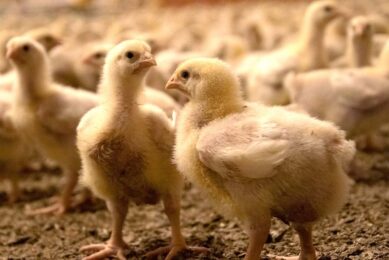Precision feeding for improved performance

New monitoring and modelling tools have enabled precision feeding systems for poultry to be developed that aim to feed birds individually according to measured body weight, on the one hand, and target weight, on the other. Together with novel feed additives, such as algae, this is improving the feed efficiency of broilers to meet best environmental practices.
The digitalisation of agriculture has exploded in the past 20 years, adding new perspectives to what is called ‘precision agriculture’. It is now possible to monitor an incredible number of parameters, most of them in real-time, in terms of the inputs (raw materials), animals, atmosphere and effluents, etc. These innovations place different constraints upon producers, including the growing pressure to reduce the environmental impact of animal farming. This therefore raises the question: how can all the innovative solutions stemming from new technologies be used to benefit agricultural efficiency in all its various facets, including economically and from an environmental perspective?
Reducing environmental impact
In 2017, in the context of its Industrial Emissions Directive (2010/75/EU), the EU published the Best Available Techniques (BAT) Reference Document for the Intensive Rearing of Poultry or Pigs, providing guidelines for large producers (> 40,000 birds) to reduce the environmental impact of their production. It includes limits for nitrogen, phosphorous and ammonia excretions, as well as guidelines to reduce energy and water wastage. The document provides techniques to prevent or reduce the environmental impact of operating installations. It further covers the potential environmental improvements per technique, associated monitoring and costs, as well as possible interactions between techniques. These BATs cover multiple aspects of poultry farming: feeding, housing, storage, manure spreading, etc.
In France the work conducted by RMT Elevages et Environnement (a network of institutions that between 2008 and 2019 worked together on sustainable farming) led to the development of ‘Good Environmental Practices for Farming’ (GEPF) which gathered a wide range of practical tools (documents, software, applications and databases) to support farmers in reducing environmental impact. Both the EU BATs and the French GEPF made feeding their central focus with a clear objective: to limit the amount of undigested feed to reduce wastage and ammonia emissions. In this context, the EU Directive considered 2 physiological processes essential: the enzymatic digestion of feed in the gastrointestinal tract and the absorption of nutrients from the gastrointestinal tract. Based on this approach, several techniques are described with a view to reducing the environmental impact of animal feed: multiphase feeding, the use of synthetic amino acids, the use of highly digestible phosphorous and phytase, and the use of additives to help reduce nitrogen excretion.
 Can algae residuals be used in chicken feed?
Can algae residuals be used in chicken feed?
Belgian researchers are using residues from algae production for human food to assess their application in chicken feed. This idea looks promising.
New technologies improve feed efficiency
New monitoring and modelling tools have enabled precision feeding systems for poultry to be developed that aim to feed birds individually according to measured body weight, on the one hand, and target weight, on the other. The quantity and quality of feeds (energy and amino acid levels) can then be adjusted in real time. Despite the fact that such systems have shown benefits in the experimental stage, their on-farm application has so far been limited for practical reasons: difficulty in adjusting the systems to various, non-standard commercial operations, sensitivity of the system, maintenance constraints, etc. More common practices are therefore being implemented in the field today, such as multiphase feeding or reducing the crude protein level in the diet while ensuring that it is still balanced in essential amino acids. Several studies show promising results, although the impact of feeding a low protein diet still needs to be investigated.
Additives to reduce nitrogen excretion
Meanwhile, new technologies are not exclusive to the digital world. Another means to reduce undigested feed and ammonia emissions is to support digestibility with in-feed solutions. Several types of feed additives are available on the market. Among them, an innovative product combining clay and macroalgae is very promising for its capacity to improve the efficiency of different types of diets, by increasing the activity of the digestive enzymes found in the gut. A series of studies was conducted by Pr Rostagno and Pr Albino at the University of Viçosa (Brazil) to evaluate the capacity of this algoclay complex (ACC) to improve the feed efficiency of broilers. One of the experiments evaluated the nitrogen-corrected apparent metabolizable energy (AMEn) of the diet of broilers fed with or without the ACC. The results showed that the use of the ACC increased the AMEn by 56 kcal/kg (+2% compared to the control). Measurements of nitrogen balance also showed that the ACC increased nitrogen retention by 6% (reflecting an improved use of proteins) and decreased nitrogen excretion by 8%, making it a good candidate for reducing poultry environmental impact. Other experiments focused on broiler performance. 3 experiments were set up during 2018 and 2019, each differing in their supplementation of exogenous enzymes and with 2 treatment groups: a control (with no ACC supplementation) and a test (with 0.1% ACC supplementation in all feeding phases) (Table 1).
The results of the 3 experiments were consistent, showing a lower feed conversion ratio in the test group compared to the control group (2-3% decrease, Figure 1), as well as a higher growth rate in the groups supplemented with the ACC compared to the control (2-4% higher ADG, Figure 2), independently of the use of exogenous enzymes. Interestingly, the greatest effect of the ACC on performance was observed in the grower and finisher phases (21-42 days), considered to be the most important in terms of economic and environmental impact (>75% of the feed intake of broilers takes place after 21 days).
Figure 1 – Effect of the ACC on the feed efficiency of broilers.

Figure 2 – Effect of the ACC on the growth rate of broilers.

Net benefit
Economically speaking, the improvement in performance increased the net benefit over feed cost from US$ 0.03 to US$ 0.08 per broiler in the test groups compared to the control, with the highest savings made in study 3. All in all, this series of studies highlighted the capacity of the ACC to improve the feed efficiency and growth performance of broiler chickens, independently of the use of exogenous enzymes. Demonstration of a synergistic effect between the ACC and exogenous enzymes requires further investigation. Meanwhile, the supplementation of broiler diets with the ACC, as part of a global strategy to reduce feed waste and environmental impact, has proven interest.
Author:
Marie Gallissot, Olmix
Join 31,000+ subscribers
Subscribe to our newsletter to stay updated about all the need-to-know content in the poultry sector, three times a week. Beheer
Beheer








 WP Admin
WP Admin  Bewerk bericht
Bewerk bericht